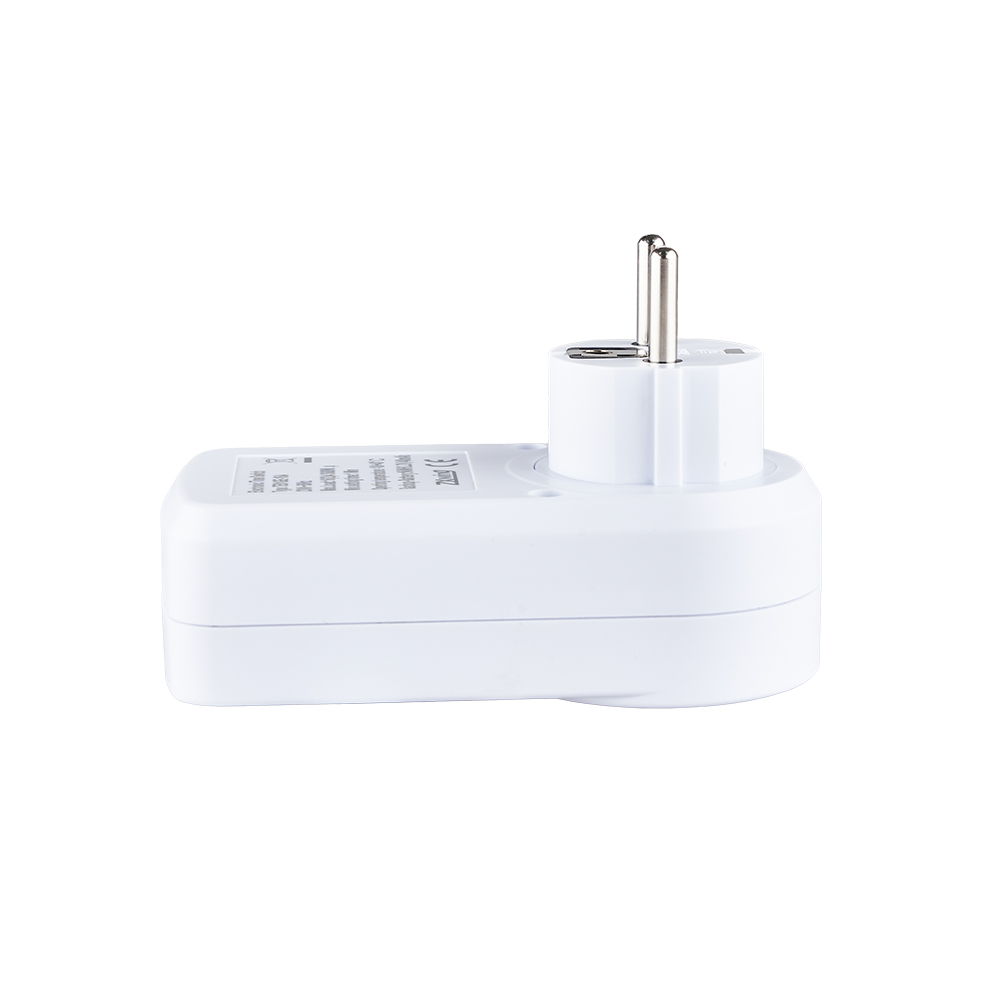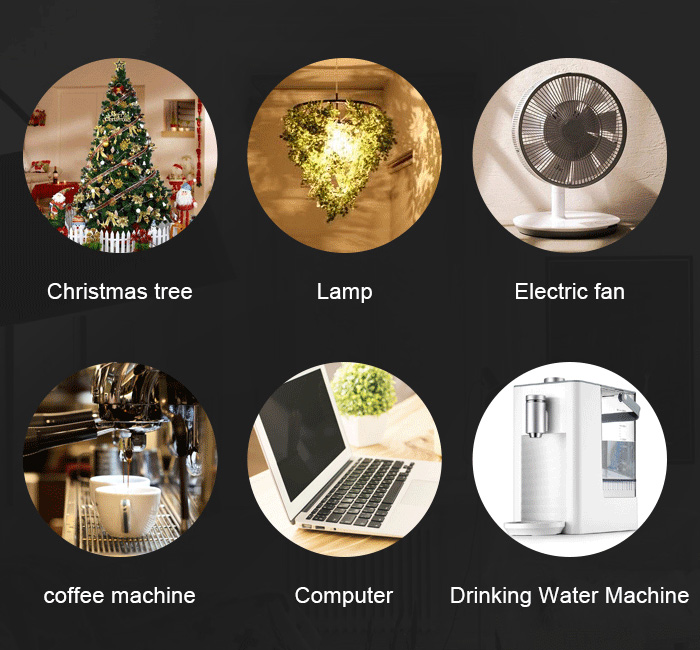A high-tech home doesn't have to cost a fortune. Smart plugs (and power outlets) are an easy and affordable way to upgrade ordinary appliances, lighting, and any other electronics into smart home devices that you can control straight from your smartphone. Although installing and using these plugs is relatively simple, choosing which one is right for you is no easy task. To help you out, we've rounded up the best smart plugs and power outlets we've tested, along with a few tips to consider when automating your home.
All smart plugs can turn your devices off and on, but only some can tell you how much power your devices are using. The TP-Link Kasa Plug Slim With Energy Monitoring generates energy reports, letting you know just how much power is going through your lamp, home theater, or appliance. With Matter support, it works with most major smart home platforms and voice assistants. Industrial Wireless Radio Remote Control

This smart plug is a bit pricey, but it can potentially save you money in the long run if you want to make sure some of your larger electronics aren't using too much power. It's worth picking up to keep an eye on your power-hungry appliances, though there are cheaper options for automating small household items like lamps.
The Wyze Outdoor Plug provides two smart outlets you can individually control, in a weatherproof package designed to withstand rain and snow with a built-in light sensor for automating power based on available daylight. It's also very affordable, especially for an outdoor smart plug.
Pick up the Wyze Outdoor Plug if you want to automate holiday decorations, lighting, heaters, or anything else you keep outside. Just be aware that it doesn't support HomeKit or Matter.
Why limit yourself to just one or two outlets when you can remotely manage six at a time? The TP-Link Kasa Smart Wi-Fi Power Strip is a full power strip with a half dozen outlets you can individually control and automate, along with three USB ports that are useful if you want to charge anything.
This power strip is useful for managing multiple lamps and other devices at once, as long as they're relatively close to each other. It works with Alexa and Google Assistant, but it doesn't support HomeKit, Matter, or SmartThings.
Like the Wyze Plug Outdoor above, the Wyze Plug lets you control your lights and other devices without much of an investment. It's just, obviously, not intended for the outdoors. It works with Alexa, Google Assistant, and IFTTT, and it's easy to set up.
Smart plugs aren't particularly expensive (and you can often find them on sale), but the Wyze Plug is still one of the cheapest out there. If your smart home setup isn't built around HomeKit, Matter, or SmartThings, and you want to save money, this is worth checking out.
The Leviton Smart Mini is a bit expensive for a small one-outlet smart plug, but it has loads of features for automating your lighting. It works with Alexa, Google Assistant, HomeKit, Matter, and SmartThings, and it supports dimming for compatible bulbs.
This is the smart plug to get if you want to set up dimmer routines or otherwise adjust the light levels of your non-smart bulbs from your phone. Its wide compatibility also means it should play nice with all your other smart home gadgets and will continue to work if you decide to switch platforms or voice assistants later.
Roku is a newcomer to the smart home market, but its first products in the category have proven very capable thanks to a collaboration with well-established budget-friendly device maker Wyze. Roku smart home devices can work with Alexa and Google Assistant, but their big appeal is for Roku TV and media hub users, because they're the only smart switches, bulbs, and cameras that you can control with the otherwise very limited Roku voice controls.
With the same weatherproofing (and physical design) of the Wyze Plug Outdoor, the Roku Outdoor Smart Plug is another inexpensive way to remotely control your outdoor devices. It's appealing if you also use Roku devices since you don't need to set up anything else to control the plug from your couch. Otherwise, the IFTTT-enabled Wyze Plug Outdoor is our preferred budget option.
TP-Link's Kasa brand has plenty of outdoor-friendly smart plugs, but the 40A is the only one that works with Apple's HomeKit. In addition, this two-outlet smart plug supports every voice assistant and smart home standard except Matter, so you can control it just as easily whether you're an Amazon Alexa, Google Assistant, HomeKit, or Samsung SmartThings fan. It even supports IFTTT routines.
This outdoor smart plug is specifically appealing for its HomeKit and SmartThings integrations. That's its big advantage over the cheaper Wyze Plug Outdoor. If you don't use one of those home automation platforms, go with Wyze's model, which can generate energy usage reports.
The Tapo Mini is a compact smart plug from TP-Link Kasa, with a load of smart home platform options. It supports Alexa, Google Assistant, HomeKit, Matter, and SmartThings, making it one of the best-equipped mini smart plugs for handling whatever home automation standard you choose. It can't monitor power consumption, however.
Look to this smart plug if you need one with a small footprint that won't block the outlets beside it.
This single-outlet smart plug lets you control whatever is plugged into it using Alexa voice commands and the Alexa mobile app. It's a snap to install and works with some (but not all) Alexa smart home devices, but it doesn't work with other voice platforms and it lacks IFTTT support and energy reporting.
The Amazon Smart Plug is a good option for Alexa power users who want to smarten up an ordinary device like a coffee maker or a light. If you're not an Alexa loyalist, we recommend the Kasa Smart Wi-Fi Plug Slim With Energy Monitoring, which offers more features including energy reports and broader third-party interoperability for the same price.
Let's make this clear: Whether they're marketed as smart switches, smart outlets, or any variation thereof, smart plugs are ultimately plug-in outlets (or power strips). These devices plug directly into a wall outlet or traditional power strip and offer an outlet you can plug other things into for automation. You don't gain or lose any outlets in the process—you're simply making an existing outlet smart by connecting it to your home Wi-Fi network.
With that in mind, the first thing to consider is where you want to place your smart plug. While most are svelte enough to fit next to one another in your typical wall outlet, not all of them are, and power strips are a different story entirely. If you have a crowded power strip, it's important to consider the plug outlet's location. For instance, some feature outlets on the side. Whether this layout is easier or more difficult to access depends on the type of power strip you're using.
Note that some smart plugs are exclusively for the inside of your home. Others that can withstand the elements are a better choice for your backyard or porch.
Once you're sure a smart plug fits properly in your home, it's important to consider what it can do. Every plug we've tested lets you use your phone to turn control power—so if you've plugged in a lamp, for instance, you can turn it on or off no matter where you are. And most smart plugs also offer some form of scheduling. If you simply want to turn your connected coffee machine on at the same time every weekday morning, you can do that with any of the plugs on this list.
Scenes (this is the term most often used, but it might vary) let you program several devices to interact with each other. Some let you program scenes based on conditions such as temperature, humidity, and sunrise or sunset times. Others have preset "away" scenes for when you're on vacation, that turn connected devices on and off to make it look like someone is home. Scene options vary from plug to plug, so it's good to keep in mind what automation options fit your lifestyle.
If you're concerned about the environment or hoping to save a few bucks, look for a plug that supports energy monitoring. Just keep in mind that the energy data collected isn't uniform across all plugs. Some provide a detailed breakdown of how long your device has been on over the entire day, your daily average "on" time, your (estimated) monthly and daily power costs, and your average power usage in watts. Others simply give a cursory overview of the hours you use over a set period or don't report power usage at all.
Features aside, installation and app design are also major factors. Luckily, pretty much all the plugs we've tested are easy to install—you basically just plug them in and connect them to an app on your phone. App quality, on the other hand, varies. We take a close look at each plug's companion app in our reviews and consider its usability in our rating.
Ultimately, the best smart plug for you is the one that easily interacts with the products you already have, especially any smart speakers and smart displays. For example, if you like Siri or are an avid iPhone user, you can get the best experience from a plug that supports Apple's HomeKit protocol. Similarly, if you already use Amazon Alexa or Google Assistant, make sure to get a plug that supports your voice assistant of choice.
Some plugs feature native support for a particular brand of smart home products, while others can interact with nearly anything via IFTTT. We've noted which features each plug supports in the chart below to help you determine which one best fits your needs.
So, if you can't settle on a family of smart light bulbs or you don't want to shell out big bucks for a set of new connected kitchen appliances, consider connecting the products you already own with a smart plug. Whether you're just dipping a toe into smart home tech, enhancing your rental unit, or creating custom IFTTT applets, smart plugs make it simple and affordable to automate just about anything in your home.
I'm PCMag's managing editor for consumer electronics, overseeing an experienced team of analysts covering smart home, home entertainment, wearables, fitness and health tech, and various other product categories. I have been with PCMag for more than 10 years, and in that time have written more than 6,000 articles and reviews for the site. I previously served as an analyst focused on smart home and wearable devices, and before that I was a reporter covering consumer tech news. I'm also a yoga instructor, and have been actively teaching group and private classes for nearly a decade.
Prior to joining PCMag, I was a reporter for SC Magazine, focusing on hackers and …

Global Universal TV Remote Controller PCMag is obsessed with culture and tech, offering smart, spirited coverage of the products and innovations that shape our connected lives and the digital trends that keep us talking.